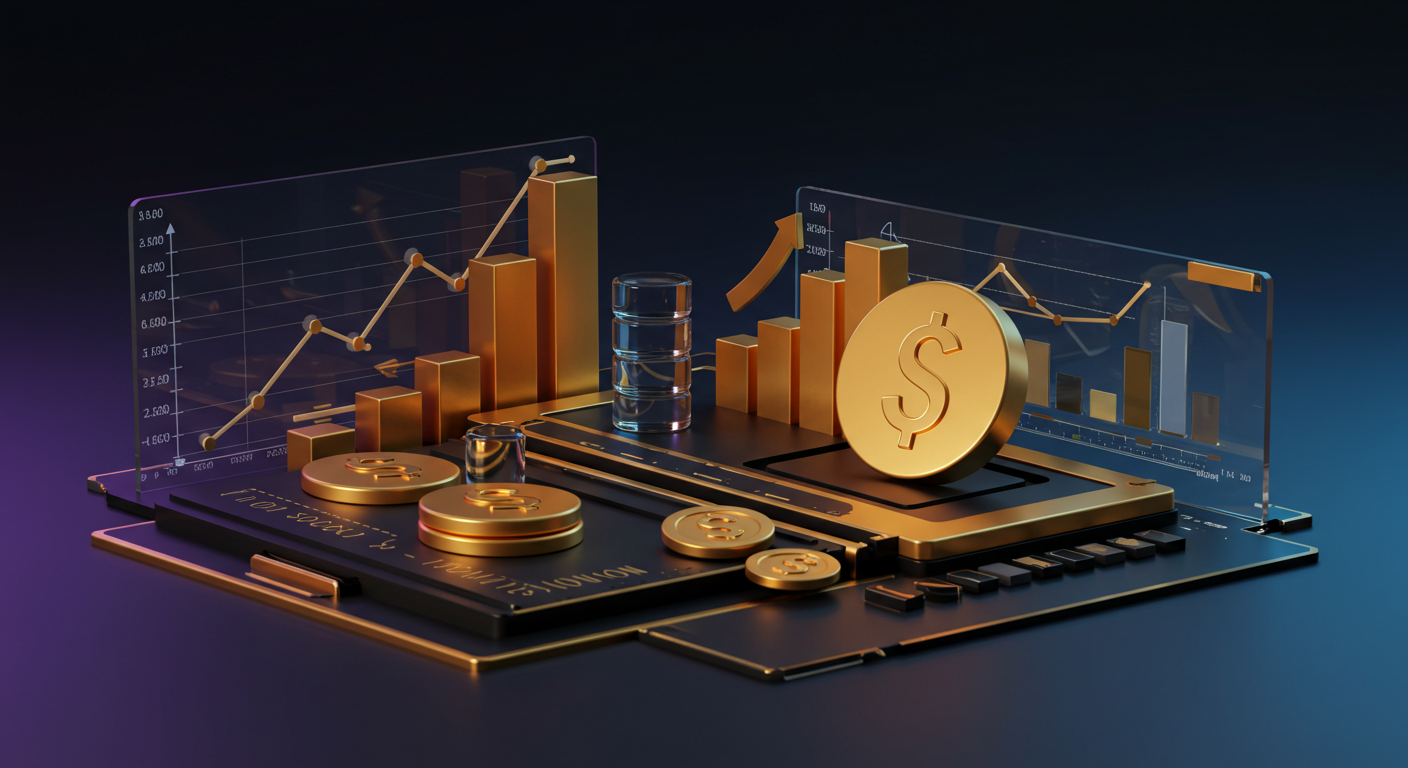
The United States 4-week bill auction rate decreased slightly from 4.225% to 4.22%. This event is part of a broader market context involving risks, uncertainties, and potential for substantial financial loss.
The forex market saw mixed movements with AUD/USD dipping under 0.6400. On the other hand, EUR/USD struggled to maintain upward momentum, easing below highs near 1.1570.
Gold Prices Reach New Heights
Gold prices climbed, reaching new daily peaks above $3,200 per ounce. Commodities benefited from a weaker US dollar and cautious global market mood.
Cryptocurrencies experienced a 4% drop, with the market’s value hovering above $3.4 trillion. Notably, altcoins like XRP, Solana, and Cardano underperformed the market average.
The UK economy showed a resurgence in the first quarter, but data reliability remains a question. It followed stagnation in the previous year’s latter half, stirring scepticism with recent figures.
Several brokers for trading EUR/USD and other markets in 2025 offered competitive features. These include low spreads, fast execution, and various platforms suited to different trading needs.
Trading foreign exchange carries high risk, potentially resulting in significant financial loss. Thorough research and independent advice are advised for those considering such market engagements.
With the slight drop in the 4-week U.S. Treasury bill rate from 4.225% to 4.22%, short-term funding has become marginally cheaper, albeit barely. This subtle move reflects changing expectations in money markets, even if real yields remain elevated on a historical basis. It’s telling us that current liquidity requirements are still tight, but not getting worse—for now.
We’re seeing mixed currency flows. The fall in AUD/USD below the 0.6400 handle suggests that commodity-linked currencies continue to feel the weight of weaker macro sentiment. That said, the dip is relatively muted, which implies traders aren’t ready to pile in on the downside just yet. Meanwhile, the euro’s inability to hold near the recent 1.1570 zone against the dollar can’t be ignored. That retreat shows us how fragile bullish attempts in major pairs remain despite some divergence between U.S. and European data.
Metals saw a clear benefit from this hesitancy in the dollar, with gold rallying beyond $3,200 per ounce. This breakout reflects renewed demand for perceived stability in portfolios and possibly quiet accumulation in response to geopolitical noise or fragmented rate expectations. An environment marked by a steadily retreating greenback, combined with low-risk appetite, seems to be lending support here.
On the digital asset front, there was a broad pullback of around 4%, but it’s the underperformance of names like Solana, Cardano, and XRP that stands out. Their lag behind the wider space might be speaking to rotation or perhaps less confidence in use-case tokens for the moment. What’s also important here is the total crypto market cap staying perched above $3.4 trillion—that shows resilience, even if short-term momentum is a worry.
Concerns Over UK Economic Data
Domestically, while GDP in the U.K. ticked higher in the first three months of the year, mounting concerns over the credibility of that data are still circulating. After the flat spell seen at the back end of last year, some are rightly cautious about placing too much weight on initial readings. Revisions have been abrupt in recent quarters, so there’s a need to cross-check sentiment signals elsewhere.
As for euro-dollar trading going forward, brokers are ramping up competition again for flows in 2025. We’ve seen the push for tight spreads and prompt execution reassert itself. Traders—ourselves included—should be mindful of what’s behind the “best-in-class” claims. Often it’s the tech stack or order routing that separates solid offerings from pure marketing.
The mentions of financial loss are far from decorative. High leverage, market dislocations and event risks can swiftly erase capital. When we’re deploying strategies in uncertain environments, the emphasis must remain on position sizing, scenario planning and execution quality. Longer-term success often depends on the choices made during these quieter stretches, rather than chasing short-term noise.
Careful selection and consistency remain our best shields.







